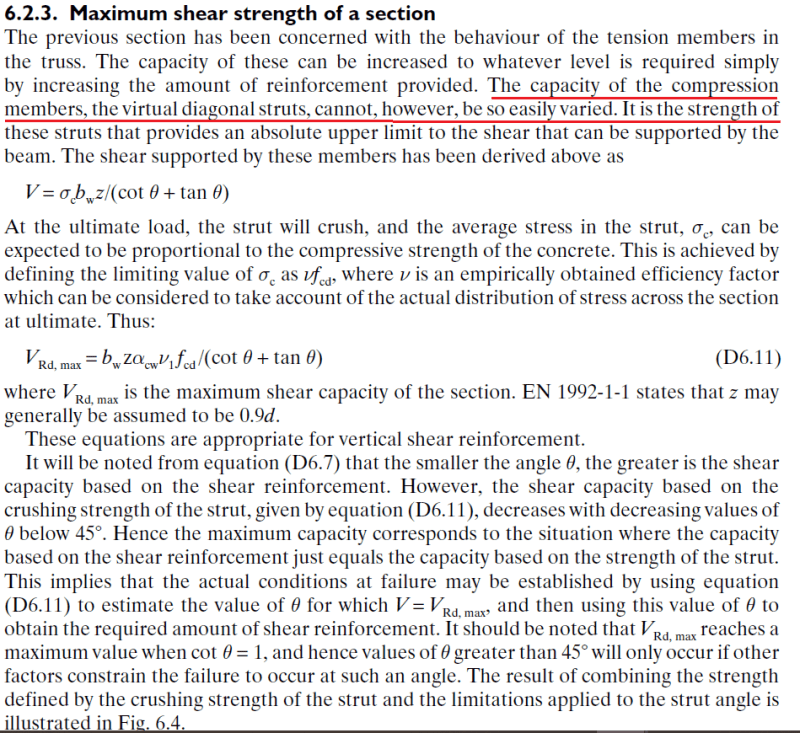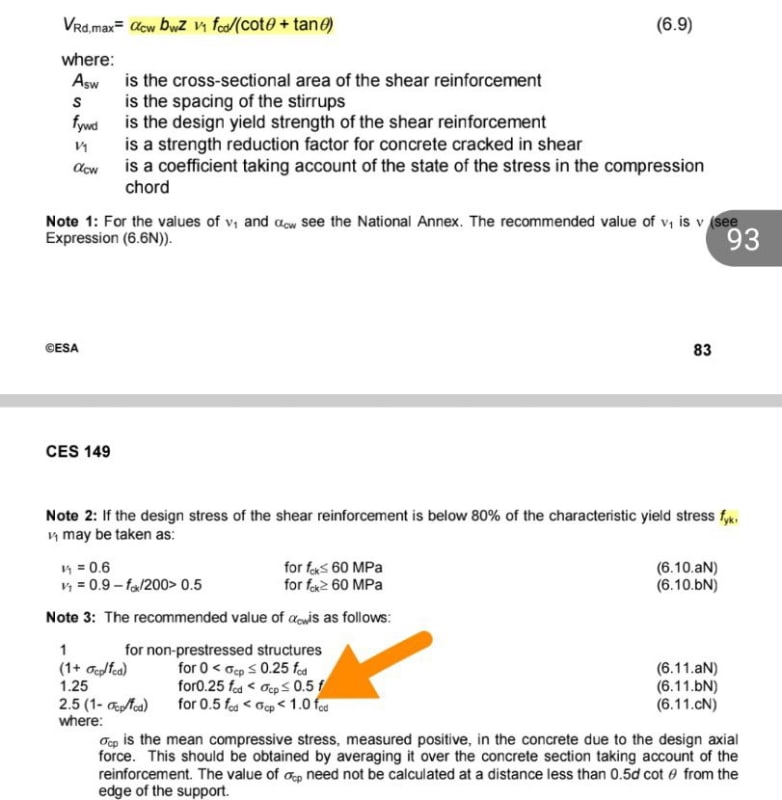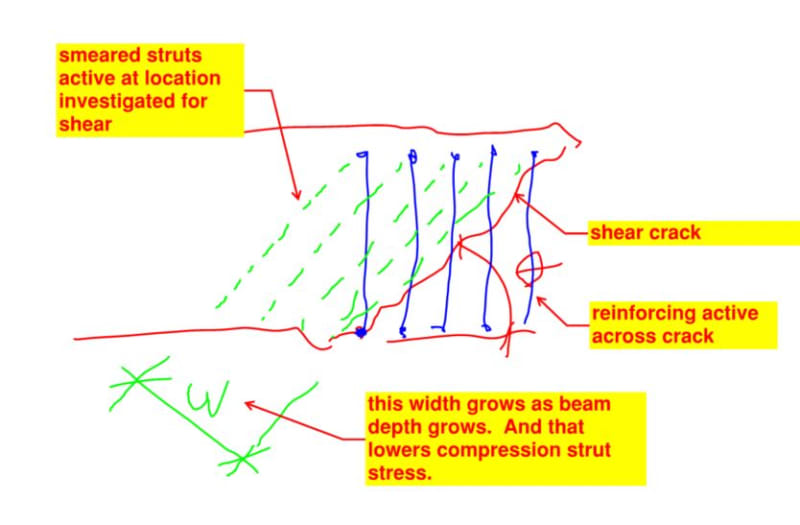Most codes cover the case of beams deficient in shear reinforcement only and usually they propose CFRP to add to the shear strength of a beam on top of shear rebar and concrete. What would be the response of a beam which has a shear force that is more than Vrd,max? usually this case is solved by jacketing the beam to increase it's depth, is there a CFRP equivalent solution?
Navigation
Install the app
How to install the app on iOS
Follow along with the video below to see how to install our site as a web app on your home screen.
Note: This feature may not be available in some browsers.
More options
Style variation
-
Congratulations TugboatEng on being selected by the Eng-Tips community for having the most helpful posts in the forums last week. Way to Go!
You are using an out of date browser. It may not display this or other websites correctly.
You should upgrade or use an alternative browser.
You should upgrade or use an alternative browser.
CFRP For beams that fail in diagonal compression of struts (Vsd>Vrd,max)
- Thread starter PSR_1
- Start date
- Status
- Not open for further replies.
SWComposites
Aerospace
need more details.
one could wrap the beam to add shear and bending stiffness/strength.
can you post a picture of the beam? is it open on all 4 sides?
is this a repair? or a retrofit for seismic?
one could wrap the beam to add shear and bending stiffness/strength.
can you post a picture of the beam? is it open on all 4 sides?
is this a repair? or a retrofit for seismic?
PSR1 said:What would be the response of a beam which has a shear force that is more than Vrd,max?
One would expect the concrete shear compression struts to crush and, thus, compromise the benefit of the FRP.
PSR_1 said:usually this case is solved by jacketing the beam to increase it's depth, is there a CFRP equivalent solution?
That technique should be equally effective with FRP. What you're doing with such a strategy is making it such that more stirrups cross each potential shear crack and, therefore, more smeared concrete struts contribute to the resistance of that shear. More smeared struts = lower average strut compression. This solution should be agnostic to whether your shear reinforcing is rebar are FRP so long as deformation between the two is compatible.
- Thread starter
- #4
Thanks for the reply Kootk. but the diagonal struts spacing doesn't increase or decrease depending on the amount of shear reinforcement present in the section ( for stirrup, I don't have full information on CFRP). according to Eurocode the minimum angle the strut can have is 22 degree and the maximum is 45 degree. the strut inclination can vary between the two depending on the amount of shear force it is sustaining. for a given depth at 45 degree one would get the maximum diagonal compression force the strut can carry, after that only increasing the depth is the way to go. please check the attached pictures for further clarification.


OP said:Thanks for the reply Kootk. but the diagonal struts spacing doesn't increase or decrease depending on the amount of shear reinforcement present in the section ( for stirrup, I don't have full information on CFRP).
I didn't say that the strut spacing changed. What changes is the total width of smeared concrete struts that contribute to resistance at any given location where shear is considered.
- Thread starter
- #8

I think rapt is pointing in the wright direction.according to eurocode 2, memebers subjected to axial compression will experience enhanced level of Vrd,max. But this is if the provided axial compression is below 0.5fck. Beyond this limit the benefit start to decline gradually becoming zero at 1*fck. With externally bonded prestressed CFRP, the shear capacity can be increased while the constant moment type balanced load helping in flexure. I think this is the way.
PSR_1 said:usually this case is solved by jacketing the beam to increase it's depth, is there a CFRP equivalent solution?
I may have misunderstood your original post. I thought that you were asking if it would be possible to improve Vrd_max by increasing the flexural shear depth of the section and jacketing it with FRP shear reinforcement. Which, of course, would be possible. Is it the case that you're actually asking for a solution that does not involve increasing the depth of the section?
- Status
- Not open for further replies.
Similar threads
- Question
- Replies
- 3
- Views
- 2K
- Question
- Replies
- 1
- Views
- 5K
- Replies
- 2
- Views
- 7K
- Locked
- Question
- Replies
- 4
- Views
- 2K
- Question
- Replies
- 2
- Views
- 6K

